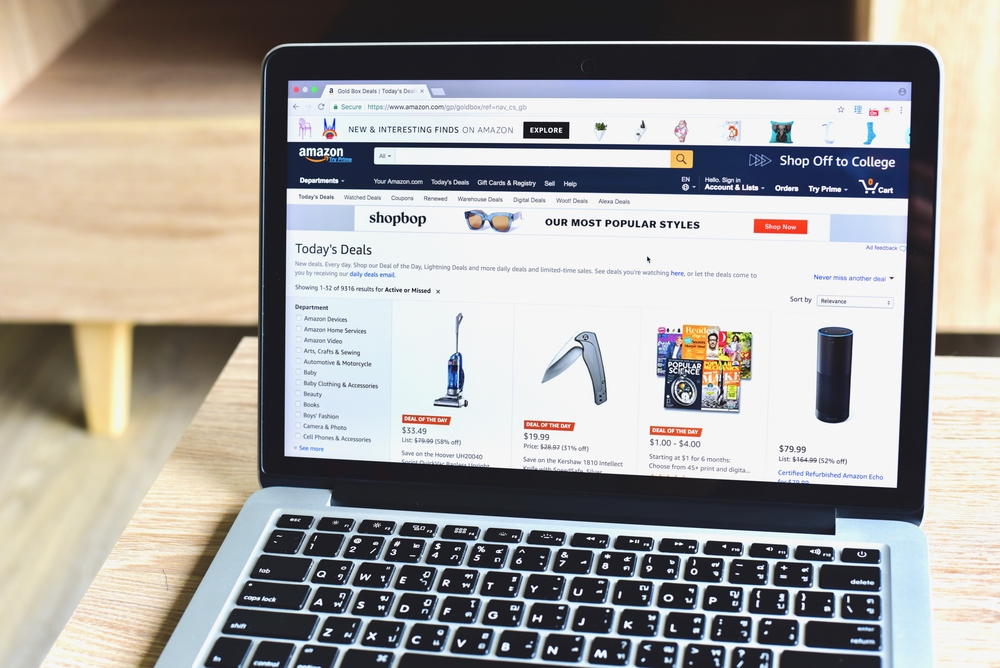What is a good conversion rate on Amazon? What percentage of sales should I be spending on advertising? And what kind of click-through rate can I expect on my ads on Amazon?
Many of the nearly 2 million brands selling on Amazon.com Inc.’s online marketplaces around the world no doubt ask themselves these questions about performance. And now there’s a report that provides them benchmarks on 18 key performance metrics.
The report comes from Fortunet Partners Ltd., an investment bank that specializes in deals involving Amazon sellers and other ecommerce companies. Fortunet says its report, “Benchmark Guide for Amazon Private Label,” reflects data it’s obtained through its engagement with more than 150 Amazon-focused merchants in the United States, United Kingdom and Europe.
Fortunet assists Amazon sellers, direct-to-consumer brands and ecommerce technology providers sell their businesses, and this guide focuses on how each of the 18 metrics impacts how potential buyers view an Amazon brand.
The Fortunet report divides the Amazon marketplace metrics into four categories: advertising, market and business performance, sales and financial, and operational complexity. For each of the 18 data points, it provides high to low scores and, in most cases, advice on how a seller can improve its performance.
Here is a brief summary of Fortunet’s assessment of the most important Amazon marketplace sales and financial metrics.
Then, read a summary of Fortunet’s assessments of advertising and market and business performance metrics. Stay tuned for information on operational complexity later this week.
Amazon marketplace sales and financial metrics
Refund rate
Percentage of orders that lead to refunds. A low rate is preferred, as it signifies customer satisfaction and product quality. A higher rate can also reduce profitability.
- Benchmark: High >13%; Fair 5-8%; Low <3%
- Fortunet suggestions: Focus on quality control and product inspections, especially for products frequently returned. Continuously evaluate and enhance packaging to ensure products arrive in good condition.
COGS %
Cost of goods sold as a percentage of revenue. For Amazon sellers, this typically includes all sourcing, manufacturing, shipping, storage and other direct costs before the product arrives at an Amazon warehouse. A low COGS percentage is an important indicator of a brand’s strength, profitability and efficiency.
- Benchmark: High >40%, Fair 25-30%, Low <20%
- Fortunet suggestions: Regularly analyze and negotiate costs with suppliers and delivery services. Consider using Amazon Warehousing & Distribution (AWD) instead of external 3PL to cut costs, and Amazon Global Logistics (AGL) when shipping directly to Amazon.
SDE margin
Seller Discretionary Earnings measures how much profit the owner (or seller) derives from a business. Includes all earnings before accounting for the owner’s salary, taxes, interest, depreciation and amortization. A higher, stable SDE suggests to potential buyers a lucrative investment opportunity.
- Benchmark: High >25%, Fair 15-17%, Low <10%
- Fortunet suggestions: Weigh the impact on profit when considering ways to boost revenue. Regularly review and negotiate expenses. Use profit analytics tools that factor in all Amazon fees as well as cost of goods sold at the individual product level.
ROI per product
Net revenue (gross revenue less refunds and promotions) divided by all costs associated with a product. Buyers look for multiple products with high ROI.
- Benchmark: High >100%, Fair 45-70%, Low <25%
- Fortunet suggestions: Focus on product differentiation and a strong value proposition to justify premium prices, leading to higher ROI. Consider expanding into additional Amazon marketplaces using existing reviews, as this may be an easier way to increase ROI than introducing new products. Before launching new products, consider all relevant fees. Consider bundles that can boost ROI.
Year-over-year revenue/profit growth
Percentage growth in revenue and profit from one year to the next. Buyers favor businesses with consistent positive growth as this indicates a history of success and potential for expansion.
- Benchmark: High >20%, Fair -5%, Low <(-20%)
- Fortunet suggestions: Focus on increasing return customer rate with outstanding customer service, post-purchase engagement and possible subscription offers. Manage inventory effectively to prevent stock-outs that impede growth. Consider discontinuing poor-performing products.
Fulfillment fees %
Fulfillment fees as a percentage of revenue for each product. Includes all Amazon fulfillment fees, such as storage, picking and packing, and delivery. The lower the fulfillment fee percentage, the better the profit margin.
- Benchmark: High >35%, Fair 20-27%, Low <10%
- Fortunet suggestions: Focus on product packaging to minimize dimensional weight fees. For oversized products that are expensive to ship, consider fulfilling on your own. Think about bundling products as this can reduce per-unit fulfillment fees and boost sales.
Do you rank in our databases?
Submit your data and we’ll see where you fit in our next ranking update.
Sign up
Stay on top of the latest developments in the ecommerce industry. Sign up for a complimentary subscription to Digital Commerce 360 Retail News. Follow us on LinkedIn, Twitter and Facebook. Be the first to know when Digital Commerce 360 publishes news content.
Favorite